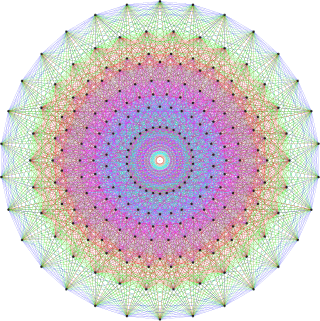Cartan subalgebra
| Group theory → Lie groups Lie groups |
|---|
 |
|
In mathematics, a Cartan subalgebra, often abbreviated as CSA, is a nilpotent subalgebra of a Lie algebra that is self-normalising (if for all , then ). They were introduced by Élie Cartan in his doctoral thesis.
Existence and uniqueness
Cartan subalgebras exist for finite-dimensional Lie algebras whenever the base field is infinite. If the field is algebraically closed of characteristic 0 and the algebra is finite-dimensional then all Cartan subalgebras are conjugate under automorphisms of the Lie algebra, and in particular are all isomorphic.
Kac–Moody algebras and generalized Kac–Moody algebras also have Cartan subalgebras.
Cartan subalgebras of semisimple Lie algebras
A Cartan subalgebra of a finite-dimensional semisimple Lie algebra over an algebraically closed field of characteristic 0 is abelian and also has the following property of its adjoint representation: the weight eigenspaces of restricted to diagonalize the representation, and the eigenspace of the zero weight vector is . (So, the centralizer of coincides with .) The non-zero weights are called the roots, and the corresponding eigenspaces are called root spaces, and are all 1-dimensional. (See Cartan subalgebras of semisimple Lie algebras for more information.)
If is a linear Lie algebra (a Lie subalgebra of the Lie algebra of endomorphisms of a finite-dimensional vector space V) over an algebraically closed field, then any Cartan subalgebra of is the centralizer of a maximal toral Lie subalgebra of ; that is, a subalgebra consisting entirely of elements which are diagonalizable as endomorphisms of V which is maximal in the sense that it is not properly included in any other such subalgebra. If is semisimple and the field has characteristic zero, then a maximal toral subalgebra is self-normalizing, and so is equal to the associated Cartan subalgebra. If in addition is semisimple, then the adjoint representation presents as a linear Lie algebra, so that a subalgebra of is Cartan if and only if it is a maximal toral subalgebra. An advantage of this approach is that it is trivial to show the existence of such a subalgebra. In fact, if has only nilpotent elements, then it is nilpotent (Engel's theorem), but then its Killing form is identically zero, contradicting semisimplicity. Hence, must have a nonzero semisimple element.
Examples
- Any nilpotent Lie algebra is its own Cartan subalgebra.
- A Cartan subalgebra of the Lie algebra of n×n matrices over a field is the algebra of all diagonal matrices.
- The Lie algebra sl2(R) of 2 by 2 matrices of trace 0 has two non-conjugate Cartan subalgebras.
- The dimension of a Cartan subalgebra is not in general the maximal dimension of an abelian subalgebra, even for complex simple Lie algebras. For example, the Lie algebra sl2n(C) of 2n by 2n matrices of trace 0 has a Cartan subalgebra of rank 2n−1 but has a maximal abelian subalgebra of dimension n2 consisting of all matrices of the form with A any n by n matrix. One can directly see this abelian subalgebra is not a Cartan subalgebra, since it is contained in the nilpotent algebra of strictly upper triangular matrices (or, since it is normalized by diagonal matrices).
Splitting Cartan subalgebra
Over non-algebraically closed fields, not all Cartan subalgebras are conjugate. An important class are splitting Cartan subalgebras: if a Lie algebra admits a splitting Cartan subalgebra then it is called splittable, and the pair is called a split Lie algebra; over an algebraically closed field every semisimple Lie algebra is splittable. Any two splitting Cartan algebras are conjugate, and they fulfill a similar function to Cartan algebras in semisimple Lie algebras over algebraically closed fields, so split semisimple Lie algebras (indeed, split reductive Lie algebras) share many properties with semisimple Lie algebras over algebraically closed fields.
Over a non-algebraically closed field not every semisimple Lie algebra is splittable, however.
See also
References
- Borel, Armand (1991), Linear algebraic groups, Graduate Texts in Mathematics, 126 (2nd ed.), Berlin, New York: Springer-Verlag, ISBN 978-0-387-97370-8, MR 1102012
- Jacobson, Nathan (1979), Lie algebras, New York: Dover Publications, ISBN 978-0-486-63832-4, MR 0559927
- Humphreys, James E. (1972), Introduction to Lie Algebras and Representation Theory, Berlin, New York: Springer-Verlag, ISBN 978-0-387-90053-7
- Popov, V.L. (2001) [1994], "C/c020550", in Hazewinkel, Michiel, Encyclopedia of Mathematics, Springer Science+Business Media B.V. / Kluwer Academic Publishers, ISBN 978-1-55608-010-4